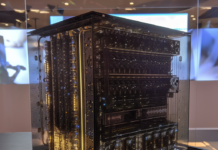
Fringe factor: Real but not understood.
Ball lightning is a rare and enigmatic atmospheric phenomenon that has mystified scientists and laypeople alike for centuries. Characterized by the appearance of bright, spherical, and sometimes floating balls of light, ball lightning is typically associated with thunderstorms. Despite ongoing scientific research, the true nature and cause of this phenomenon remain elusive.
Historical Accounts and Observations
The first recorded observation of ball lightning dates back to the early 17th century. Since then, numerous eyewitness accounts have described the phenomenon as floating orbs of light, varying in size from a few centimeters to several meters in diameter. These luminous spheres have been reported to display a range of colors, including blue, yellow, green, and red. Ball lightning is generally short-lived, lasting only a few seconds to a couple of minutes before dissipating or exploding.
While ball lightning has been observed both indoors and outdoors, it is most commonly associated with thunderstorms and, in some cases, has been reported to enter buildings through windows or other openings. It has also been linked to damage to structures and injuries to humans, although such occurrences are rare.
Theories and Explanations
Despite extensive research, a comprehensive explanation for ball lightning remains elusive. Several theories have been proposed over the years, including:
- Plasma: One of the leading theories suggests that ball lightning is a form of plasma, a highly ionized gas that emits light. The plasma could form due to electrical discharges during a thunderstorm, creating a self-contained, buoyant ball of ionized gas.
- Electromagnetic knots: Another theory posits that ball lightning is created by electromagnetic fields, specifically, twisted or knotted magnetic field lines that can trap and confine electric charges in a self-sustaining structure.
- Combustion of airborne chemicals: Some researchers believe that ball lightning might result from the combustion of specific chemical compounds in the atmosphere. For example, it has been proposed that the phenomenon could be due to the ignition of airborne particles of silicon, which could be released from the ground by lightning strikes.
- Vaporized silicon hypothesis: Another variant of the chemical theory suggests that ball lightning occurs when a lightning strike vaporizes silicon-rich soil, producing a cloud of silicon vapor that subsequently oxidizes and emits light.
- Rydberg matter: This theory posits that ball lightning is formed from highly excited, loosely bound clusters of atoms called Rydberg matter. When these clusters become electrically charged, they could emit light and take on a spherical shape.
- Quantum phenomena: Some researchers have suggested that ball lightning may be related to quantum mechanics, specifically, a type of macroscopic quantum state known as a Bose-Einstein condensate.
Ongoing Research and Challenges
Despite advances in scientific understanding and technology, ball lightning remains a challenging phenomenon to study. Its unpredictable and fleeting nature makes it difficult to observe and document under controlled conditions. Additionally, the rarity of ball lightning events means that researchers must often rely on anecdotal reports and historical accounts, which can be inconsistent and unreliable.
In recent years, laboratory experiments have attempted to replicate the conditions thought to produce ball lightning, with varying degrees of success. Some experiments have managed to create small, short-lived luminous orbs that share similarities with eyewitness accounts of ball lightning. However, these controlled occurrences are yet to definitively explain the full range of characteristics and behaviors associated with natural ball lightning events.
Further advancements in high-speed imaging, atmospheric monitoring, and computational modeling may provide more opportunities to study and understand the phenomenon. Additionally, the collection of high-quality eyewitness accounts and systematic analysis of these reports can help researchers identify common patterns and characteristics, offering valuable clues to the nature of ball lightning.
Conclusion
Ball lightning, a mysterious and rare atmospheric phenomenon, continues to captivate the curiosity of scientists and the public alike. Despite numerous theories and laboratory attempts to recreate the phenomenon, a definitive explanation remains elusive. Ongoing research, technological advancements, and diligent documentation of eyewitness accounts may eventually unlock the secrets behind this enigmatic natural occurrence. Until then, ball lightning will continue to be a fascinating topic for both mainstream and fringe science enthusiasts.





